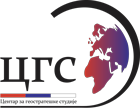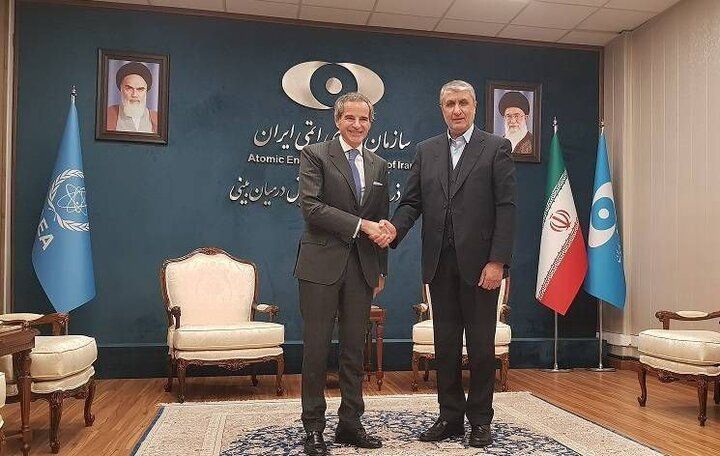By Mehdi Honardideh, expert of the Center for Geostrategic Studies from Iran
Grossi’s visit serves as the junction of two crucial processes:
1. Technical monitoring and verification in the nuclear field, both under Iran’s obligations within the framework of the NPT (Non-Proliferation Treaty) and legal mechanisms of the JCPOA (Joint Comprehensive Plan of Action).
2. Political developments on the international stage and bilateral negotiations between Iran and the United States.
The Trigger Mechanism and the Tenth-Year JCPOA Report
With only a short time remaining until the expiration of the trigger mechanism in October 2025, European countries have warned of its activation if an agreement is not reached by June. Grossi has announced that the IAEA’s (International Atomic Energy Agency) comprehensive report will be published before June, carrying significant weight. A negative report would provide European states with the justification to activate the mechanism, while a positive report could increase optimism that it won’t be triggered. Therefore, Grossi’s visit holds considerable influence over the nature of this report.
Technical Disputes and the IAEA’s Demand for Credible Assurances
Beyond political considerations, several technical issues remain between Iran and the IAEA—both under safeguard agreements and JCPOA provisions. The way Iran interacts with the IAEA on these matters will impact Grossi’s report:
1. Monitoring and Equipment Installation: Following Iran’s suspension of the Additional Protocol, some monitoring devices, such as cameras at key nuclear sites like Natanz and Fordow, were disabled. The IAEA wants these devices reinstalled.
2. Undeclared Locations and Uranium Particles: The agency has found high-enriched uranium particles at sites like Turquzabad and Abadeh, which were not officially declared to the IAEA. Iran insists there is no location requiring declaration under the Comprehensive Safeguards Agreement (CSA).
3. Material Imbalance (SRD – Significant Quantity Discrepancy): A key disagreement between Iran and the IAEA concerns discrepancies in the quantity of uranium contained in solid waste transferred from JHL to UCF.In February last year, Iran sent a letter, after which the IAEA officially confirmed that the discrepancy was “resolved.” However, despite this outcome, the agency later used the term “corrected” in subsequent reports.
Grossi has stated that Iran must provide credible assurances regarding the peaceful nature of its nuclear program. To achieve a positive report. that permanently nullifies the trigger mechanism, Iran might take steps such as agreeing to reinstall monitoring equipment, reopening seismic stations under the CTBT (Comprehensive Nuclear-Test-Ban Treaty), and engaging in greater cooperation with the IAEA.
Negotiations with the United States
Grossi’s visit is closely linked to Iran-US negotiations. Any agreement will require the IAEA’s verification of Iran’s nuclear commitments. While the US may want to send its own inspectors to Iran, this is unlikely to be accepted by Tehran. As such, Grossi has been invited to participate in future rounds of Iran-US talks. His role will be critical in aligning the JCPOA process with ongoing Iran-US negotiations.
Importance of Grossi’s Visit for Iran
Grossi’s visit matters to Iran for two main reasons:
1. Ensuring a positive IAEA report that prevents the technical justification for activating the trigger mechanism.
2. Coordinating the JCPOA’s legal track with Iran-US negotiations.
Additionally, Iran seeks to push the IAEA to take a stance on military threats from the US or Israel against its nuclear facilities, aiming to delegitimize any potential strikes in advance.
Conclusion
Two primary scenarios can be envisioned:
– First scenario: Iran reaches an understanding with the IAEA, leading to a positive report, expiration of the trigger mechanism, and progress in negotiations with Europe and the US.
– Second scenario: The IAEA issues a negative report, prompting Europe to activate the trigger mechanism, leading to a return of UN sanctions and a potential collapse of negotiations.In this case, hostile discourse against Iran would intensify, and military/security actions could enter the equation.
Regardless, Grossi’s comprehensive report on Iran’s nuclear activities will be influenced by Iran-US negotiations. If Washington seeks a deal, it will encourage a positive IAEA report to prevent the mechanism’s activation. Conversely, if the US pursues other objectives, it may pressure the IAEA to issue a negative report.
Source: Center for Geostrategyc Studies

